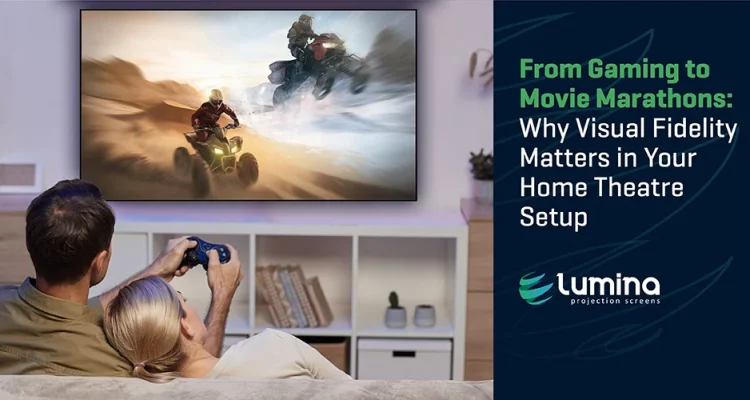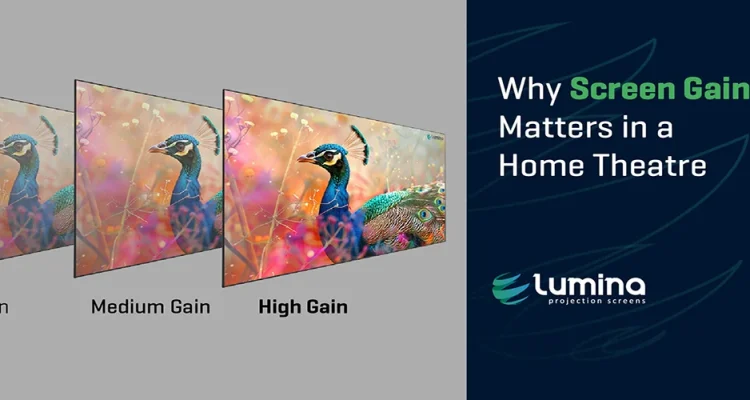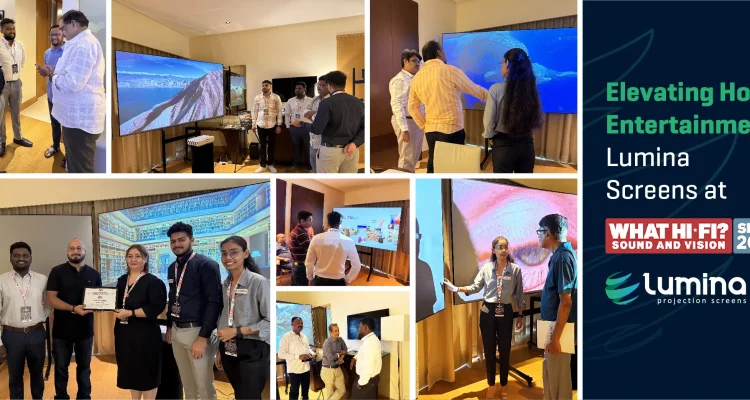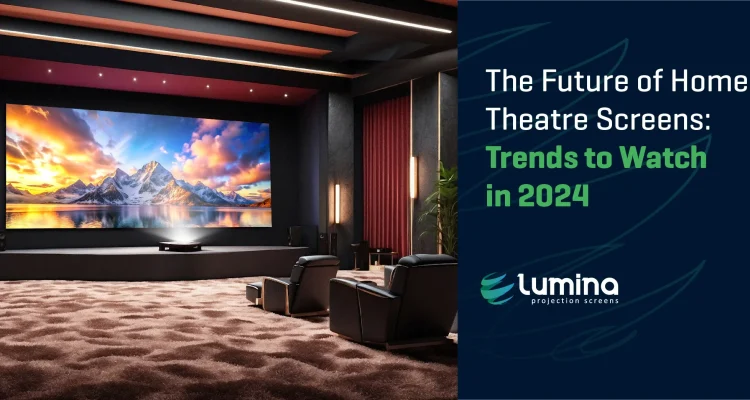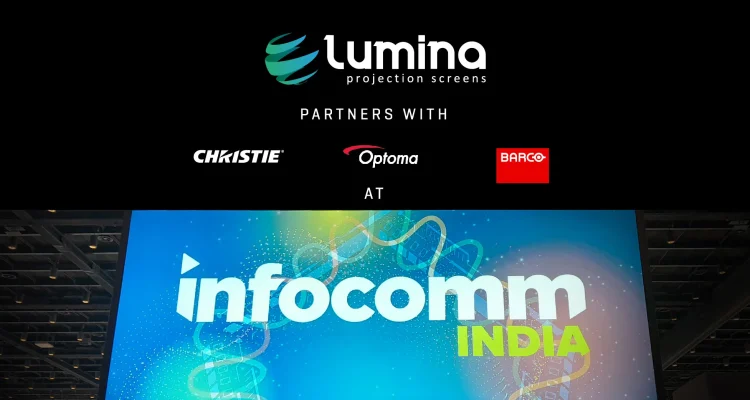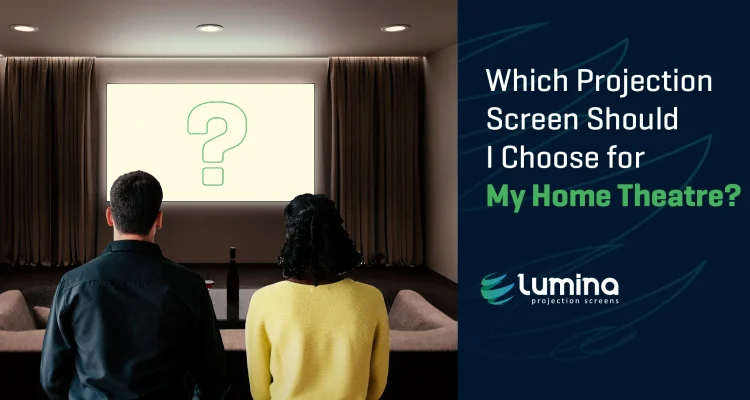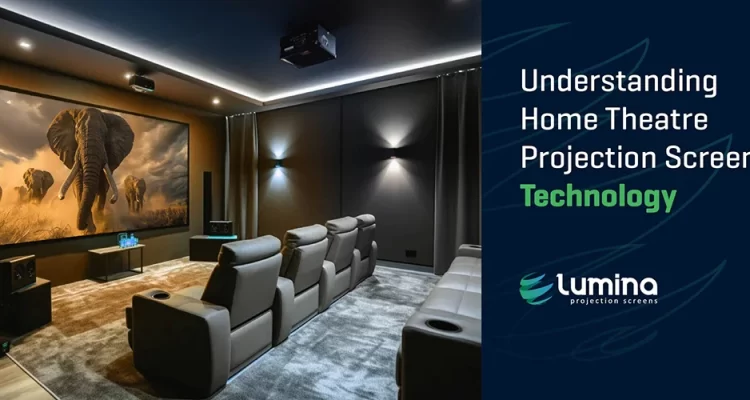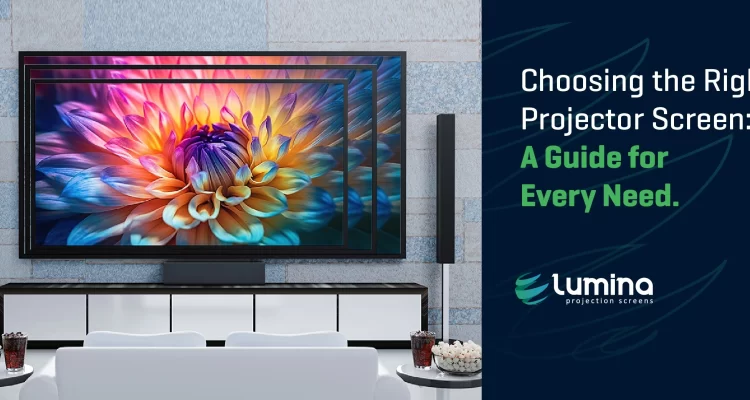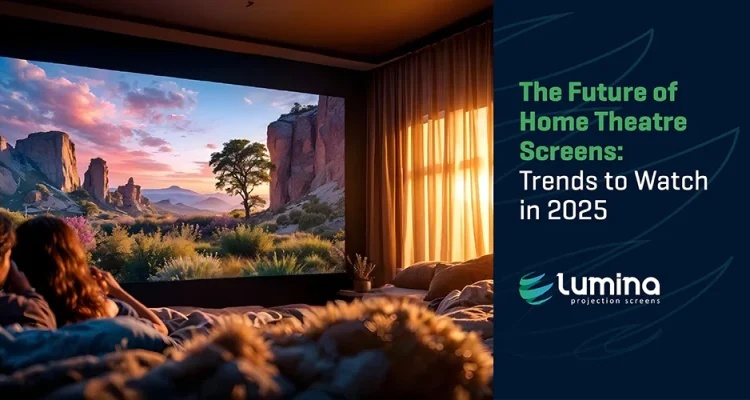
The Future of Home Theatre Screens: Trends to Watch in 2025
Home theatre technology continues to advance rapidly, redefining how we experience entertainment at home. This trend shows no sign of slowing down, with new developments shaping screens to deliver higher clarity, functionality, and immersive experiences. In 2025, several exciting trends are set to make home theatres more adaptable, visually striking, and customized. Here’s a look at what’s next in home theatre screens and how brands like Lumina Screens are staying at the forefront of these innovations.
1. Enhanced Ambient Light Rejection (ALR)
As home theatre systems become popular in multi-use spaces like living rooms and open-concept areas, screens with Ambient Light Rejection (ALR) technology are becoming essential. ALR screens are specially designed to block ambient light sources, delivering crisp visuals even in rooms with natural or artificial light.
For example, Lumina Screen’s Leor Black uses advanced ALR technology to block up to 90% of ambient light, allowing viewers to enjoy bright, clear images without unwanted glare or washout. This feature makes ALR screens versatile, ensuring high performance even in broad daylight.
2. Ultra-High Definition (UHD) and 16K Support
As projector resolution capabilities increase, so does the need for screens that can support these high-definition images. The demand for 8K and even 16K screens is rising, as they allow viewers to see each detail and texture in ultra-crisp quality.
Lumina Screens is already creating screens with 8K and 16K support to match these advancements. Such screens offer unmatched clarity, especially in large viewing areas, enhancing the immersive experience for home theatres. By delivering sharper and more vibrant visuals, UHD screens are shaping the future of high-definition entertainment.
3. Customization Options
Customization is another key trend as users seek screens that fit their unique spaces and tastes. Customizable home theatre screens cater to a wide range of room layouts, lighting conditions, and personal preferences, making the home viewing experience more personal and functional.
Lumina Screens offers tailored screen solutions, allowing users to choose materials, aspect ratios, and screen sizes to meet their specific needs. Whether it’s a large screen for a spacious home theatre or a compact model for a smaller space, customization ensures that each setup delivers the best possible visual experience.
4. Integration of Smart Technology
Smart technology is set to transform home theatre screens by adding convenience and adaptability. Future screens may feature app controls, voice commands, and automated settings that adjust brightness, contrast, and other elements based on the room’s environment.
While still emerging, this trend has potential, and brands like Lumina Screens are exploring ways to integrate smart technology into their products. This could allow users to control their screen settings effortlessly, creating a seamless and engaging viewing experience tailored to any time of day or type of content.
The future of home theatre screens promises increased functionality, clarity, and adaptability. From ALR technology to UHD support, customization, and smart integration, these advancements are reshaping the home entertainment experience. Lumina Screens is dedicated to pioneering these trends, ensuring that each screen delivers immersive, high-quality visuals that meet the demands of modern viewers.
Stay updated with Lumina Screens latest innovations and see how we’re transforming home theatre technology. Explore our range of screens designed to elevate your viewing experience today.
FAQ’s
What is an ALR screen?
An ALR (Ambient Light Rejecting) screen enhances image contrast by rejecting ambient light, making it ideal for well-lit environments.
Is the ALR screen better than a white screen in quality?
Yes, ALR screens perform better in bright rooms, offering higher contrast and deeper blacks compared to traditional white screens.
What is Ambient Light Rejection (ALR) technology in home theatre screens?
ALR technology in home theatre screens is designed to block ambient light sources, delivering crisp visuals even in rooms with natural or artificial light. For instance, Lumina Screen’s Leor Black uses advanced ALR technology to block up to 90% of ambient light, ensuring high performance even in broad daylight.
Why is Ultra-High Definition (UHD) important for home theatre screens?
Ultra-High Definition (UHD) is important for home theatre screens because it allows viewers to see each detail and texture in ultra-crisp quality. Lumina Screens is creating screens with 8K and 16K support to match advancements in projector resolution capabilities, offering unmatched clarity, especially in large viewing areas.
How can I customize a home theatre screen to fit my space?
Customization options for home theatre screens allow users to choose materials, aspect ratios, and screen sizes to meet their specific needs. Lumina Screens offers tailored screen solutions, ensuring that each setup delivers the best possible visual experience, whether for a spacious home theatre or a compact room.
What smart technologies are being integrated into home theatre screens?
Smart technologies being integrated into home theatre screens include app controls, voice commands, and automated settings that adjust brightness and contrast based on the room’s environment. Brands like Lumina Screens are exploring ways to incorporate these features to create a seamless and engaging viewing experience.
What type of screen is best for ultra-short-throw projectors?
A specially designed ALR screen optimized for ultra-short-throw projectors ensures the best image quality and minimizes distortions.
Is it worth buying an acoustically transparent screen for a home theater?
Yes, if you plan to place speakers behind the screen. These screens allow sound to pass through without compromising audio quality.
How to pick the right projector screen material for my setup?
Consider your room lighting, projector type, and usage. Matte white is versatile, while ALR or grey materials enhance performance in challenging conditions.
Can I use a white wall instead of a projector screen?
While a white wall can work, a projector screen offers better color accuracy, brightness, and contrast for an enhanced viewing experience.
- Date - December 24, 2024
